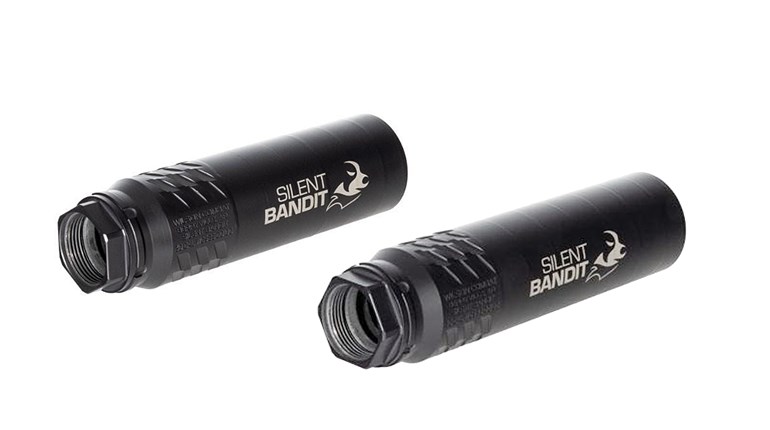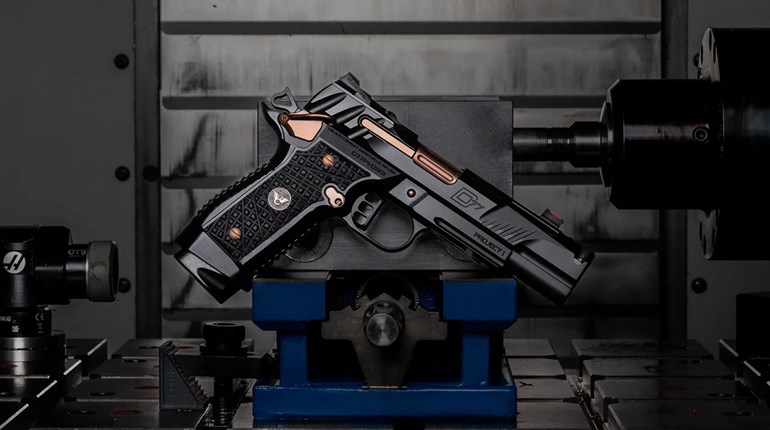
For those who have not heard, there is a new AR cartridge in town. Wilson Combat has released its 300 HAM’R, and we now have a .30-caliber round for the AR-15 that will match the power level of the time-proven .30-30 Win.
At the same time, Wilson Combat added a new rifle to the company’s product line. Designed by company founder, Bill Wilson, the “Ranch Rifle” was the first to be chambered in 300 HAM’R and is his personal concept of what an “Everyday Rifle” should be. While the new cartridge has taken the lion’s share of the spotlight, the rifle should not be overlooked, nor should Wilson’s personal involvement in the project. The combination of the chambering and the platform offer shooters an exciting new choice for an all-around rifle.
Bill Wilson, first and foremost, is a rifleman and a business executive second. Wilson uses a rifle every day, as he lives at the Circle WC Ranch in Texas and has tested and evaluated each aspect of the AR-15. The Ranch Rifle is tailored for the many demands that may present themselves at any moment of the day from hunting to defense.
Ranch Rifle
Reliability, accuracy and power are the major attributes of the Ranch Rifle, but Bill Wilson also considered the weight and balance of the weapon. Heavy- or ill-balanced weapons have a habit of being left in the gun rack and inaccessible when needed.
Reliability is assured by a combination of quality parts produced at the Wilson Combat’s own plant and the skill of the craftsmen hand-assembling each rifle. Every part is tuned to interact properly with the rest of the system and to provide unquestioned reliability.

The foundation of the Ranch Rifle system is the matched set of lightweight billet receivers of 7075-T6 aluminum. These receivers have been relieved to reduce weight without compromising strength. At the same time, a stainless 18-inch Wilson Combat barrel is profiled to provide the lightest barrel possible without affecting accuracy. The barrel is threaded and supplied with a thread protector, but no muzzle device. The barrel’s 1:15-inch twist rate is part of the secret for the rifle’s great performance with the 300 HAM’R and its projectiles in the 110- to 150-grain weight range.
Other than the barrel, all parts for the new 300 HAM’R are the same design as those for the 5.56 NATO cartridge. The bolt-carrier group is a premium mil-spec unit that has been magnetic particle (MP) inspected and has an NP3 coating.
A Wilson Combat M2 TTU (Tactical Trigger Unit) is set for a 4-pound trigger pull and is ideal for those moments of anxiety. The handguard is the company’s 12-inch M-Lok rail and is supplied with three combat rail covers and an Ergo ladder top rail cover for added comfort.
The buttstock is the Smoke Composite carbon-fiber, closed-shoulder variant. In testing I’ve found this model to work well, and its light weight helps to provide an even balance to the rifle.
An Armor-Tuff finish applied over mil-spec hard-anodizing is the standard finish on all Wilson Combat rifles, and the Ranch Rifle comes with a green and black combination. One thing to remember about Wilson Combat rifles is customers always have options. Finishes can be changed, and forest camo has been popular, but when you order a rifle you can discuss just about any aspect of the rifle.
The Ranch Rifle is supplied without sights, but a Trijicon AccuPoint 3-9×40 green-dot riflescope is part of the package. It will even come mounted and zeroed.

Quest For A Cartridge
The 300 HAM’R has been a pet project for Wilson and from the beginning he had a major goal for this cartridge. He wanted to design a round that, in his words; “would give the optimal terminal performance out of a standard AR-15 platform.” Just in case you have not heard this phrase before, “optimal terminal performance” is the politically correct way of saying this cartridge will put down whatever threat you face and will do so with authority.
Just to make things harder, Wilson wanted to maintain the magazine capacity of the 5.56 NATO, and not to make extensive changes to a standard AR-15 just to handle the 300 HAM’R.

The Results – The 300 HAM’R
Wilson Combat did have a small head start by using its own 7.62x40 WT as a guidepost. The parent case is the .223 Rem., but the neck has been expanded to .30 caliber to allow the use of the numerous projectiles available in the 110-grain to 150-grain weight range. The case was lengthened over the 7.62x40 WT to a maximum length of 1.603 inches and a 30-degree neck angle was chosen. Add in a slight decrease to the case taper and the powder capacity is maximized.
Bullet selection was based on profile and terminal expansion that would match the velocity levels of the 300 HAM’R. There are currently 16 different bullets with weights varying from 110 grains to 150 grains that have been tested and deemed suitable for the 300 HAM’R.
By basing the cartridge on the .223 Rem. parent case, and keeping the overall cartridge length to 2.260 inches, the AR-15 standard bolt and bolt-carrier group may be used without modification. Since the diameter of the bullet is greater than the 5.56, magazines designed for the .300 BLK are recommended.
A 1:15 twist rate gave the best performance overall and a simple barrel change is all that is needed to convert a standard 5.56 NATO AR-15 to the 300 HAM’R.

The results are Bill Wilson and Wilson Combat exceeded their goals by the mid-August release date. Originally he had hoped to rival the traditional .30-30 Win. lever-actions, but when compared to the current reloading manuals, the 300 HAM’R surpasses the .30-30 Win. in velocity and energy.
If you are wondering why add another cartridge for the AR-15 when there are so many out there now, it all goes back to terminal performance. Let’s just say that when your family’s safety is on the line, varmint cartridges are best left in the gun safe. There are also rounds that may offer a better B.C. but that only comes into play at extended distances. Hitting metal plates or paper targets out past 500 yards may be fun, but that doesn’t do a thing for you when your front door is being torn open. As soon as the 300 HAM’R was introduced, it became the leader for maximum energy when compared to any factory round loaded in a standard capacity AR-15.
As with any new AR round, the public will make comparisons to the current cartridges on the market and the most direct comparison will be with the .300 BLK. If a shooter wants a subsonic round for suppressed use, and is willing to deal with its limitations, the .300 BLK is your ticket. However, if you are wanting supersonic velocities to match the time proven .30-30 Win. and outstanding accuracy it is time for you to evaluate the 300 HAM’R.
Unlike many new firearms entering the market, rifles, ammunition and replacement barrels were available when the Ranch Rifle was introduced. Wilson Combat has seven different loads, and HSM and Black Hills released offerings shortly thereafter.
Range Time
The Ranch Rifle is chambered for the 300 HAM’R for a reason. This cartridge takes the AR-15 up a step increasing its utility as a viable defensive weapon. I’ve had months of following along with Bill Wilson as the cartridge was developed, and I truly appreciate the added mass and energy of the .30-caliber projectile.
The results of the accuracy testing for the Wilson Combat loads are shown in the accompanying chart, but I must admit to being biased toward the 125-grain Sierra Pro-Hunter and the 130-grain Speer Hot Core. Both showed MOA accuracy on the range and outstanding stopping power in the field.
As you would expect, the Ranch Rifle had 100-percent reliability, and it also showed improved accuracy as the range session progressed. There is something to the concept of breaking in a barrel before judging a rifle’s potential.
A ranch rifle, scout rifle or home-defense rifle are all built on the same premise. They are your go-to tools in the time of extreme need. A good example of each will all share the same attributes: They must be 100-percent reliable, they must be reasonably accurate and they must have the power to match the threat. The Bill Wilson Ranch Rifle stands up to that challenge, and adds in light weight and overall handiness.






































